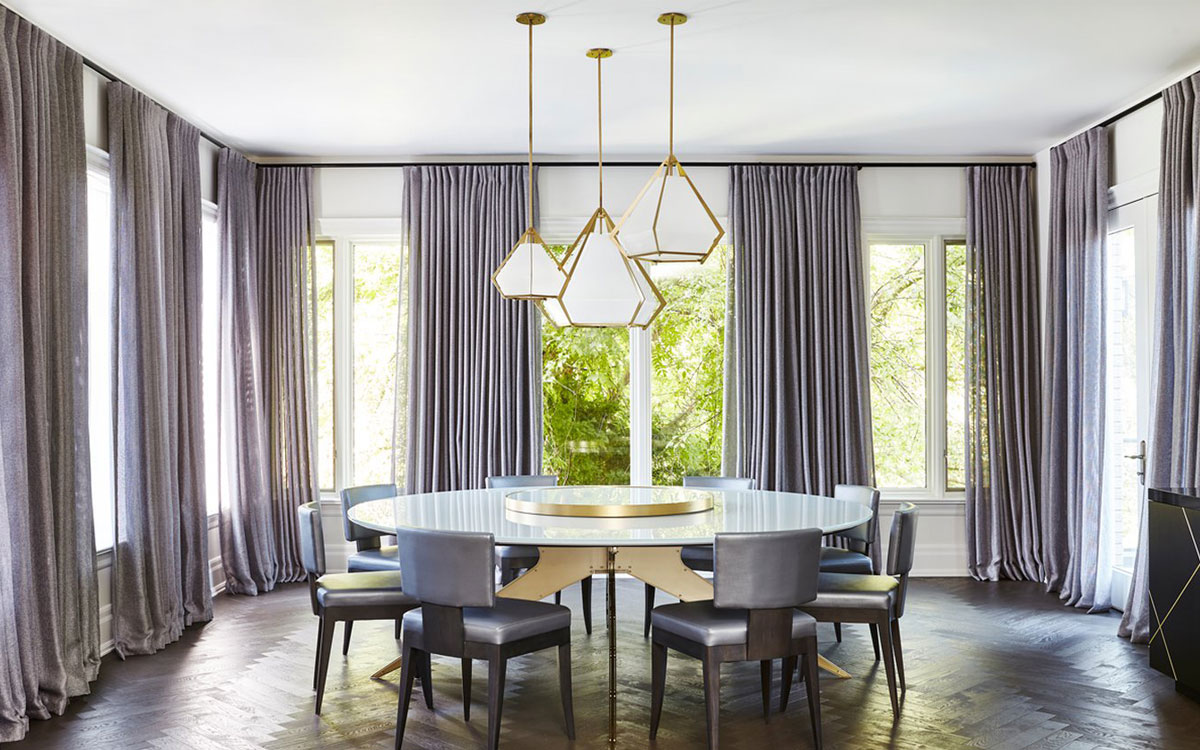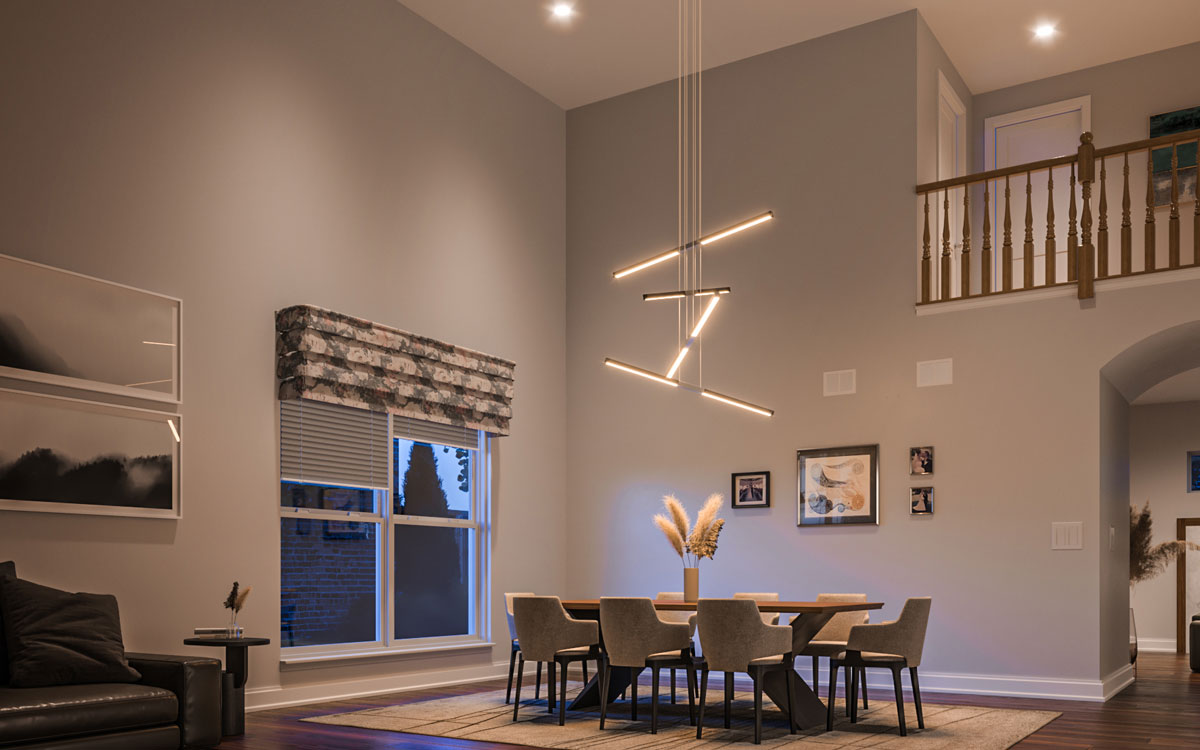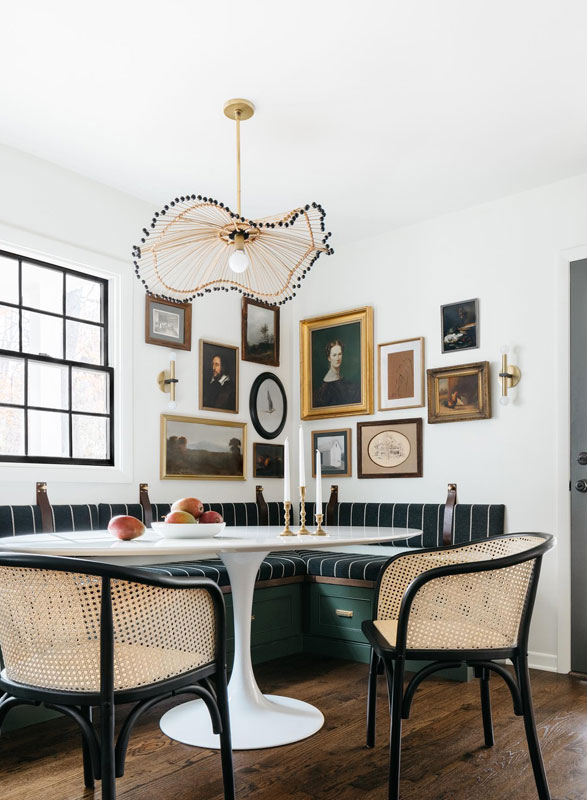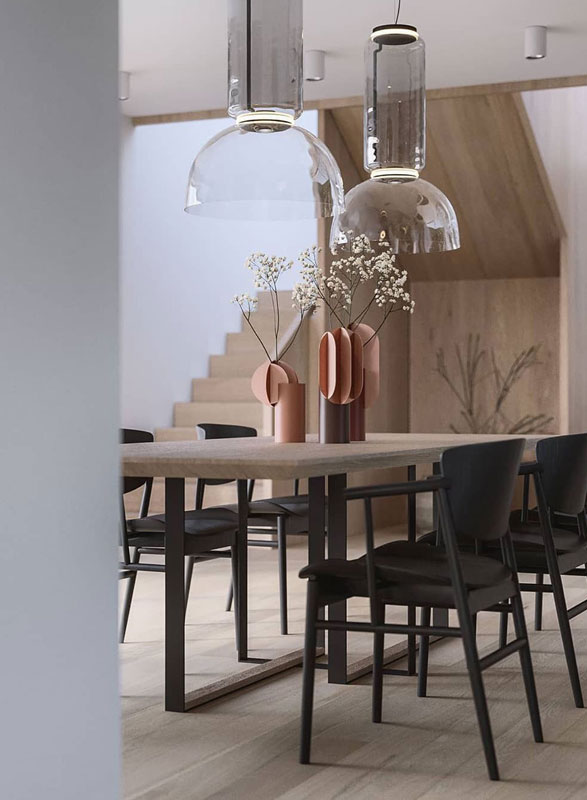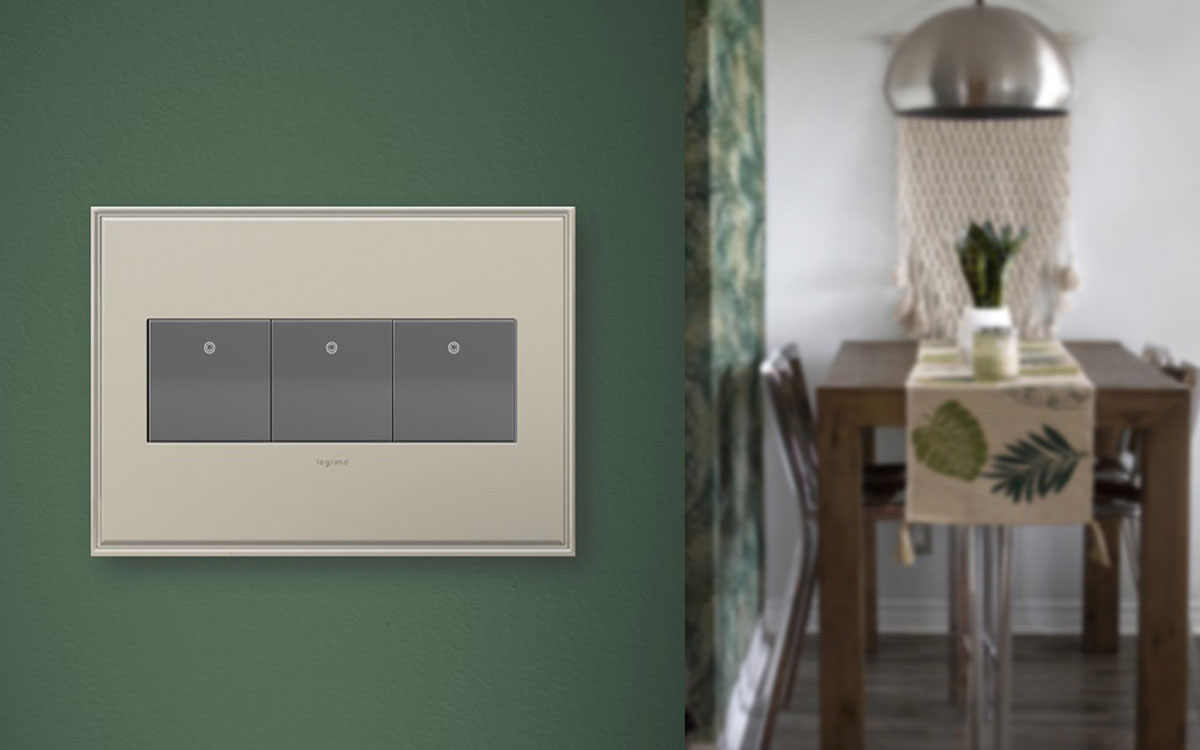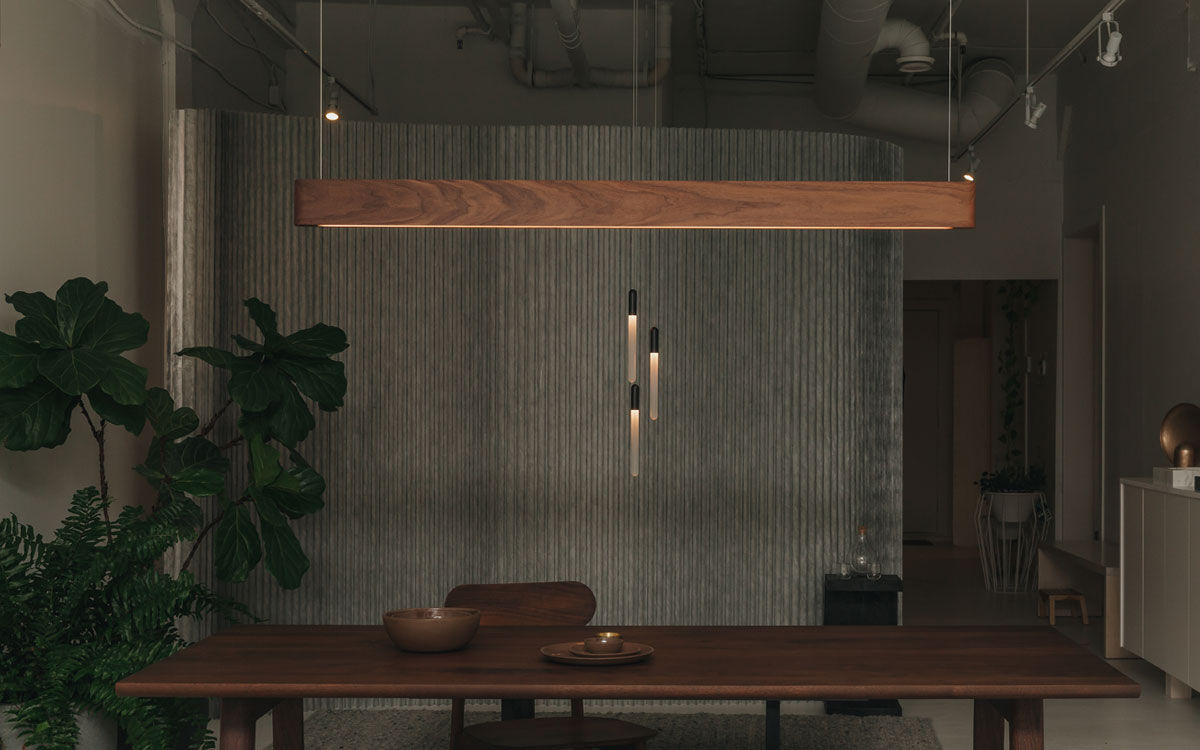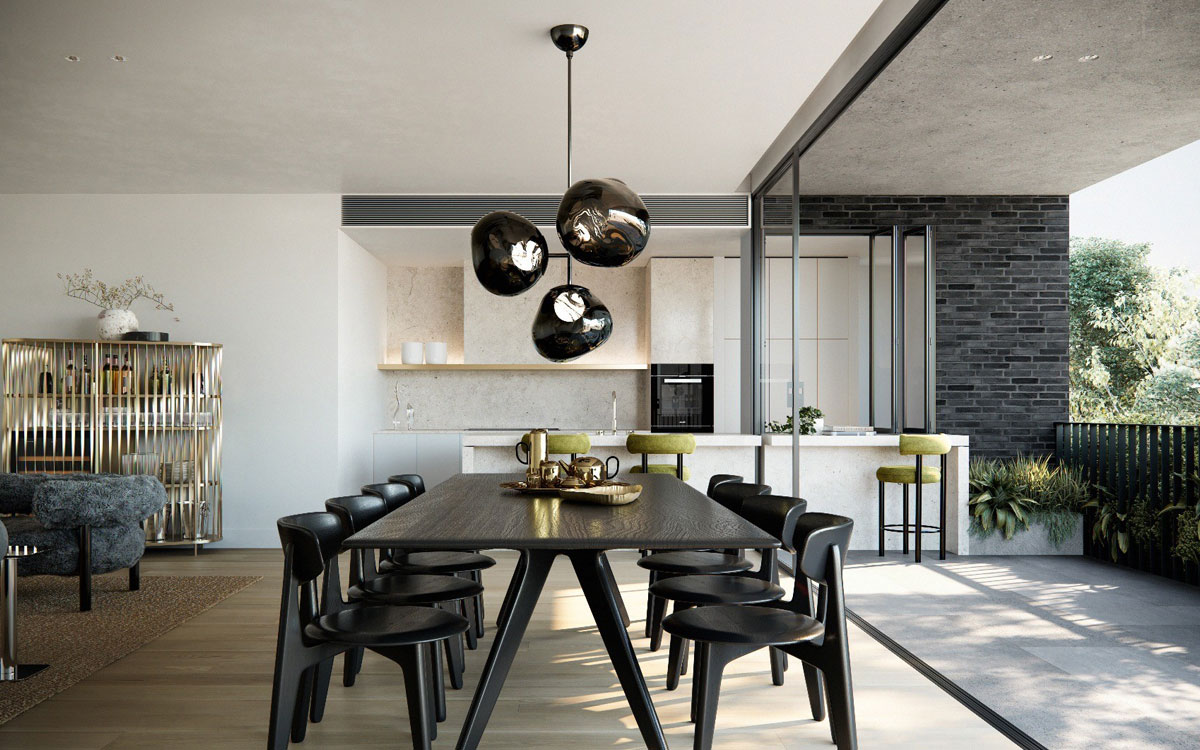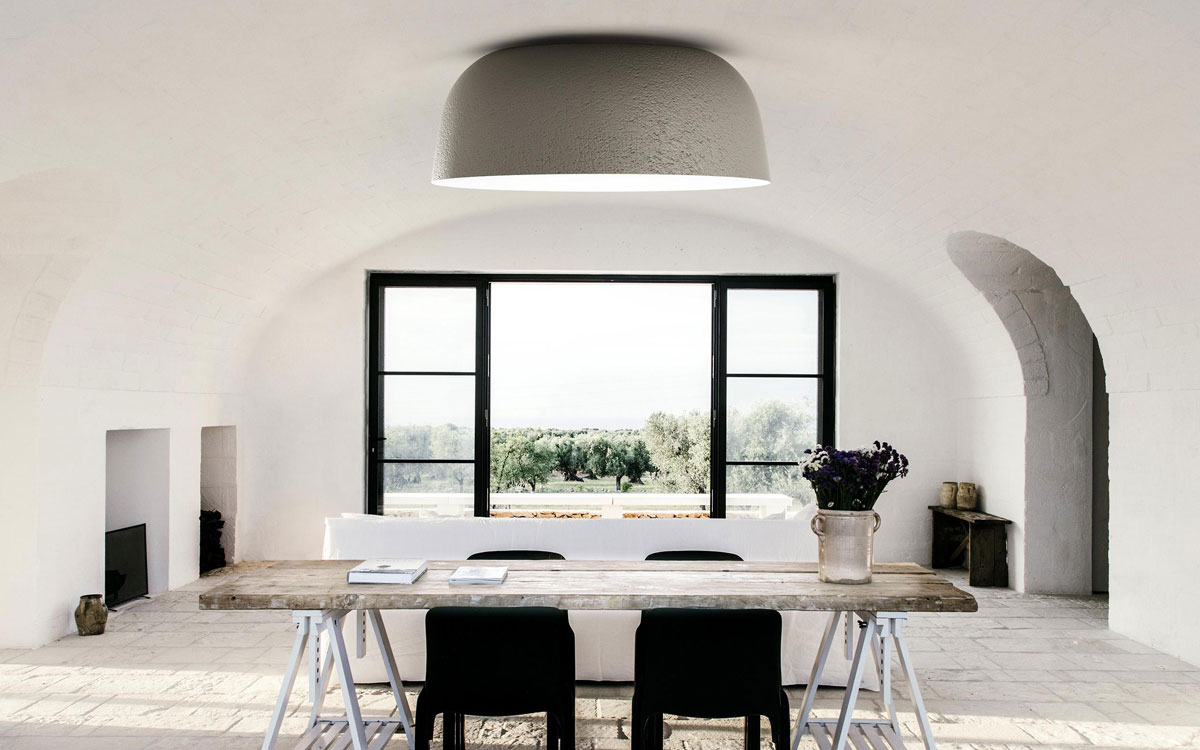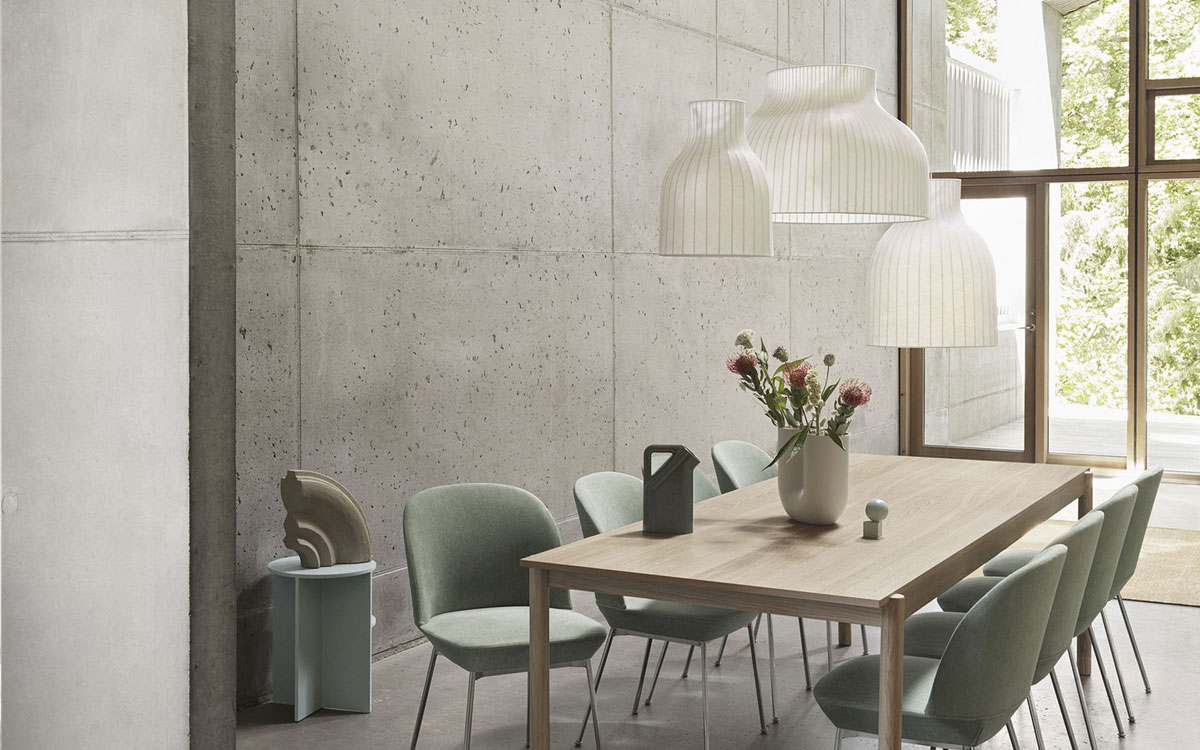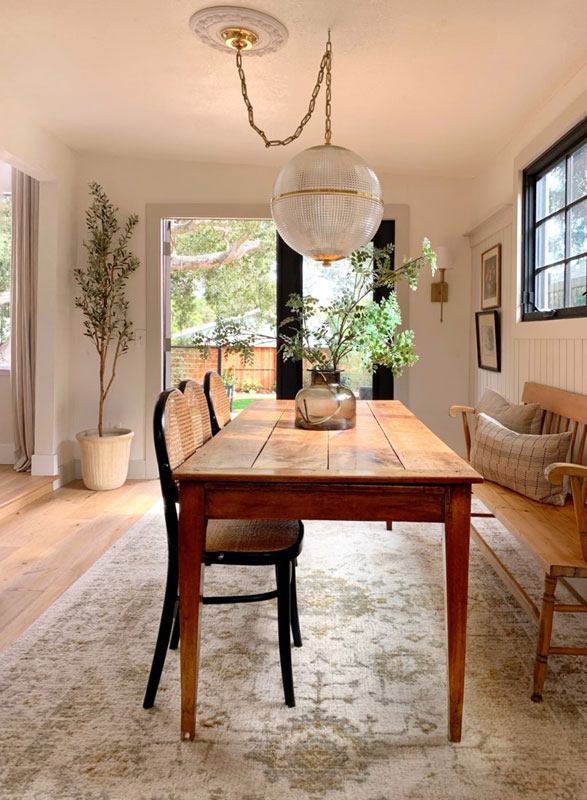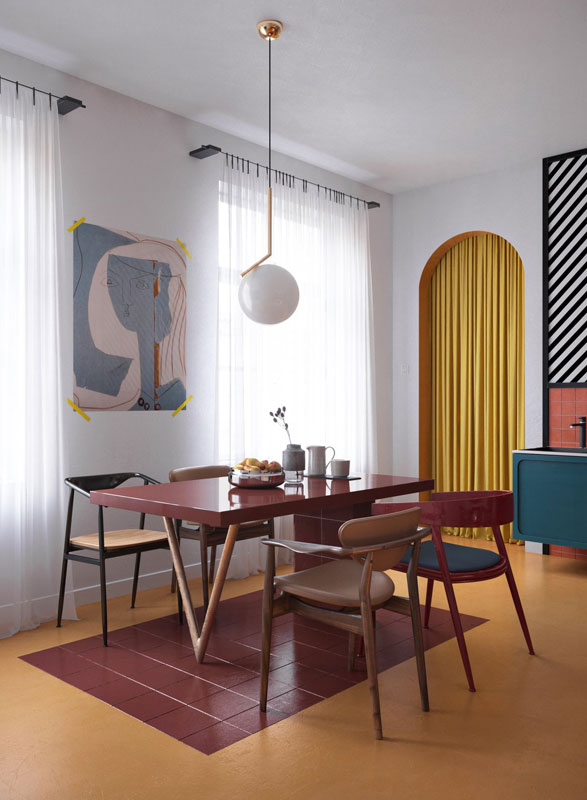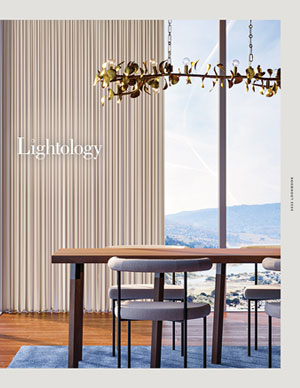- Showroom
- Design Services
- Support Center
- |(866) 954-4489
-
0
Your CartOrder Subtotal0.00
- 0
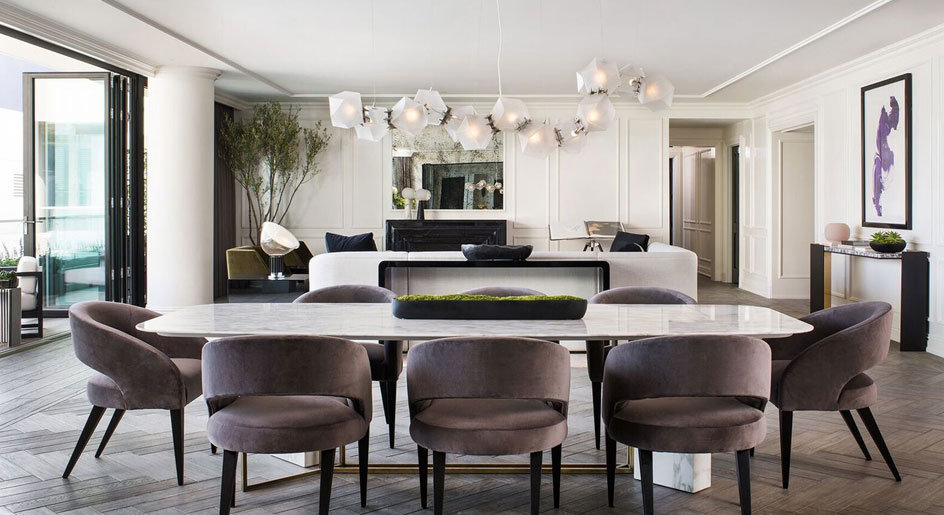
How to Light a Dining Room
The dining room is where we gather to celebrate and make memories. The spot where we have our regular everyday meals. The place where homework and school projects get finished. Sometimes, it’s even our home office. We count on our dining room to be so many things — but it can only be as versatile as its lighting.
We know all about lighting dining rooms — and we’re happy to help you figure out the best solution for your space. We’ve answered some of your questions about dining room lighting here. Of course, our ALA-certified lighting experts are always available to field any questions we’ve not covered here.
1. What are the basics of dining room lighting?
First, think about the scene you want to create. What kind of mood are you looking for? What kind of lighting will complement your personal style and your home’s existing décor? It’s also important to have enough light to illuminate the table, walls and artwork while avoiding glare. After all, our dining rooms are multi-functional spaces where we spend time doing all sorts of things.
2. How can I create balanced light in my dining room?
Just one chandelier or pendant is rarely enough to properly light any room. You can hang a chandelier over a dining room table and call it a day, but it’s best to create layers of light.
What does this mean? The idea is to provide general lighting as well as accent lighting. For example, you can use monorail, recessed and track lighting to highlight architectural elements and your artwork. This draws the eye to interesting moments in the room and keeps the space from feeling “flat.” If you don’t have any art to light, you can hang wall sconces in their place to add stylish indirect lighting to the space.
For more information, read Recessed Lighting Basics and our Monorail Lighting Guide.
3. Should I think about dimmers?
Dimmers are a great way to reduce glare and adjust the lighting for every mood and situation. It’s also possible to switch out your light bulbs. Incandescent and halogen bulbs produce a warm glow and create a cozy atmosphere. Modern, energy-efficient LED bulbs are also available in a wide range of color temperatures, some including Warm Dim and Tunable White technologies.
If you’re going to use a dimmer on your main dining room light fixture, be sure to install a separate dimmer for your wall and accent lights. And on a technical note: Be sure that the dimmer matches the power supply if you have a halogen or LED fixture.
4. Does the shape of the table matter when I’m considering a fixture?
While there are no hard and fast rules here, the shape of your table does impact which light fixtures will look best above it. A chandelier, pendant/suspension, or non-linear multi-pendant light fixture makes sense over a round table. A linear suspension or linear multi-pendant light fixture is a great fit over a rectangular table.
A linear light fixture might not look the best over a round table. But you could install two round lights over a rectangular table. Or center a round fixture over a rectangular table with a recessed downlight on each side. A streamlined monorail system with small pendants would also look great over a rectangular table.
Whichever fixture you place over your table, be sure to add soft general lighting to provide a flattering, warm background and a more comfortable atmosphere.
5. What size chandelier will look best over my dining room table?
When choosing a light fixture to illuminate your dining room table, be sure that it’s to scale with the dining room table. The size of the dining room and the width or diameter of your table will determine what size chandelier you should choose. If the room is less than 10 feet wide, try a chandelier that measures less than 24 inches in width or diameter for the best look. Of course, larger rooms and larger tables can accommodate larger chandeliers. Use our convenient chandelier size calculator to get sizing estimates.
You can also read How to Choose a Chandelier for more assistance.
6. I’d love a big show-stopping chandelier in the dining room, but I don’t think my ceiling is tall enough. How else can I get that same effect?
Ceiling semi-flush lights are a great option for rooms with lower ceilings. Both versatile and functional, they bring impressive design into the space without crowding the room. We have a huge range of semi-flush lights to choose from — in every style to elevate your dining room.
7. I throw a lot of dinner parties. Which bulbs create the warmest glow?
Chandeliers and suspensions that use incandescent bulbs typically have a warm, 2700K color temperature before dimming. Dimming a halogen or incandescent light bulb causes the color temperature to decrease — for an even warmer, amber glow.
If you’re looking for an LED chandelier or using LED replacement bulbs in an incandescent fixture, choose LEDs in the range of 2400K – 2700K to create a cozy feel. Please note that LEDs can appear cooler in color temperature when dimmed (the opposite of incandescent and halogen lighting). Warm dimming LED bulbs do a great job of replicating the familiar dimming behavior of incandescent light bulbs.
Before you choose your bulbs, look at the paint colors and finishes in your dining room. Dark colors on your walls and ceilings absorb light, which means that you will need something brighter. You can match warm earth tones, like brown, red, yellow or amber, with a 2400K-2700K bulb. Cooler colors like purple, blue-green or blue work best with a bulb in the 3000K range or higher. Choosing the right bulbs will accent and enrich the color of your dining room.
8. My dining room light creates glare. How can I fix it?
Glare is a common problem that kills the ambiance in many dining rooms. Often, simply adjusting the fixture will do the trick. Most glare issues stem from the aim of the bulb. If you have recessed lighting, you could change the trim to a raised or adjustable one. This conceals the bulb a bit more and decreases glare. Or you could install a dimmer.
9. Which fixture will look best in my space?
Take a look around your dining room. What material is the floor made of? What kind of window treatments do you have? What other metal finishes are in the room? What about the finish and style of your dining room set? Having your surroundings in mind can help you find a light fixture that coordinates with what you have and enhances the overall space.
10. My electrical outlet isn’t centered over the table. What can I do?
This happens all the time, and fortunately it is an easy fix. There are a few options to choose from.
First, you could install a swag hook over the center of the table to suspend the cord from the junction box to the swag hook. If you don’t like the idea of a hanging cord in the dining room, you can use a “hide-a-cord” to conceal it.
Monorail lighting systems or freejack pendants are other great solutions that offer a wide range of design options. They allow you to install lighting over your dining table without worrying about the location of the outlet.
Read our chandeliers article for more information on how to swag a chandelier.
Read our Monorail Lighting “How To” for more information.
Read more about how freejack lighting works.
-
What is the importance of lighting in a dining room?
-
What are some lighting ideas for a round dining table?
-
What are some lighting ideas for a rectangular dining table?






